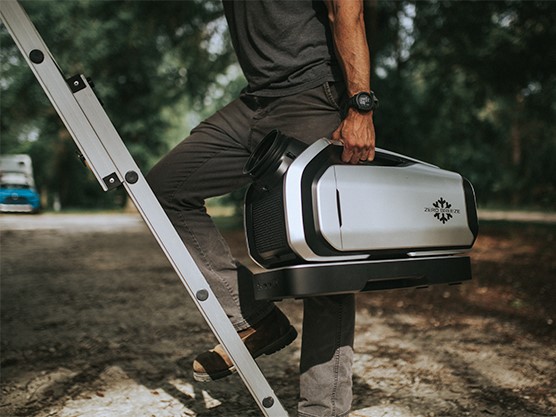
Last summer, and most of last year, really, was one of the hottest on record. This year looks to be just as hot, so you’ll need a reliable way to cool down. The problem with that is that air conditioners are expensive. They’re expensive to install and run, and if you’re living off-grid, you can pretty much forget about AC at all — until now, anyway. ZERO BREEZE has introduced the first truly off-grid air conditioner that’s ultra-portable — at only 16.5 pounds — and battery-powered. The 24-volt battery can last up to eight hours in sleep mode, perfect for extended off-grid use or van-living. You can even connect solar panels or plug it into DC or AC outlets to boost battery life, if and when available. The handheld and lightweight design works exceptionally well for easy transportation and travel, so you can bring the Mark 2 wherever your adventures take you. Use code SPRING15 at checkout through ZERO BREEZE for a limited time to get 15% off your purchase — good from March 15 to March 21.
What can the ZERO BREEZE Mark 2 do for you?

Summer can be hot and clammy, and it can even get miserably wet if you live in a humid climate. One of the trade-offs of staying off-grid is that you’re living more efficiently, which also means you’re interested in cutting down on power usage and comparable utilities. Even if that’s not your goal, and you’re just out for an adventure, you’ll have to make the same concessions. The wilderness is, well, the wilderness. But with the Mark 2, a portable, battery-powered AC unit, you can cool off anytime, anywhere.
There is no more wasting gas in your van or wearing down its battery, no more hot and suffocating tents or cabins, and no more overheating. You can simply cool down with the Mark 2 when you need to. The micro twin-cylinder compressor achieves an ideal balance between weight and performance, mainly because it’s the size of a soda can. It ensures efficient, reliable cooling without compromising portability. Indeed, the Mark 2 is portable at just 16.5 pounds, with a built-in carrying handle, convenient power options, and rapid cooling — it can lower the air outlet temperature by 30 degrees in just 10 minutes (2,300 BTUs).
Think about how hot and miserable it can get inside a tent or temporary living quarters at night, never mind during the daytime. The Mark 2 can make it comfortable in a matter of minutes. It can quickly go from being one of the most uncomfortable adventures you’ve ever had to one of the most memorable. And if you’re trying to cut back on fossil fuel energy usage, the solar option is a huge bonus.
From March 15 until March 21, you can get the Mark 2 at a reduced price of 15% off when you use code SPRING15 at checkout. Even without that incredible offer, now’s the best time to buy before it gets swelteringly hot. Do yourself a favor if you plan to spend any time outside exploring this summer: grab a Mark 2 and secure your comfort.



